

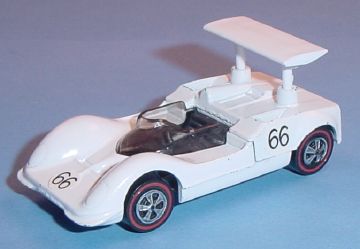
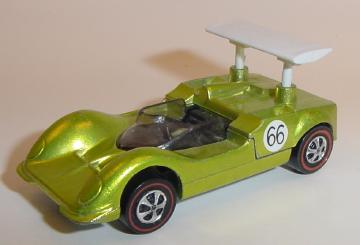
The Chaparral 2G was released in 1969 as part of the new Grand Prix Series.
The
real Chaparral 2G was the creation of designer/builder/driver Jim
Hall. The 2G was one of an interesting lineage of Chaparral cars
that Hall
built and raced in the 1960's at
various CanAm events. A unique feature of Hall's cars was a large
hydraulic rear spoiler
designed to provide
better control through turns but less drag on the straightaways.
The spoiler
debuted on the Chaparral 2C and evolved through a number of variations
on later cars. The 2G
competed in CanAm races in 1967-68, scoring two
wins. Jim Hall's driving career ended in November 1967 when the
Chaparral 2G he was driving struck the rear of
another car and flipped over, pinning Hall and breaking both of his
legs.

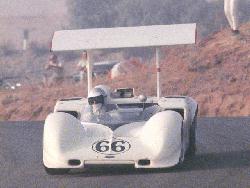
Jim
Hall in the
Chaparral 2G at Riverside.
The
Hot Wheels version of the Chaparral 2G featured a plastic spoiler that
was mounted on a rear hatch that opened to show a detailed
engine. A
sticker sheet with Jim Hall's
signature "66" racing numbers was included in the blister pack.
The Chaparral was
produced in various
Spectraflame colors, as well as in white enamel like the real
car. Chaparrals were
made at both the US and HK
plants.
Original
plastic spoilers have become almost as valuable as the car
itself! They are relatively fragile and prone to breaking where
the post attaches to
the
bottom of the
wing. Reproduction spoilers are available
from various sources, and some of these are of reasonable
quality. Most repro spoilers are characterized by a glossier
plastic.
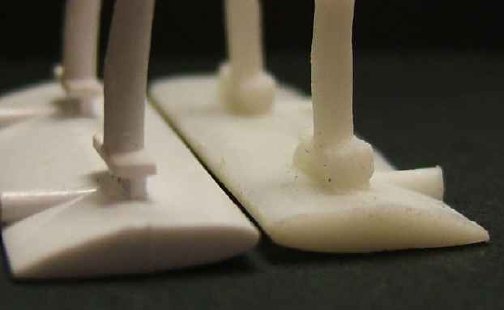
A
comparison of original (L) and reproduction (R) Chaparral wings.
As
with some of the other Grand Prix castings, the Chaparral was plagued
with rear hatch problems. Later variations included a stop peg to
keep
the
hatch from opening too
far,
and kids were advised to add "racing stripes" (i.e. tape!) to keep the
hatch closed when running
the car
down the track. US cars featured a clear windshield and a black
interior. A few US
Chaparrals have been found with brown interiors. Like all 1969
Grand Prix cars, the
Chaparral can
be found in most of the first generation colors with the exception of
creamy pink. While Chaparrals in
second generation colors such as yellow, magenta,
light green and pink are uncommon, they do exist. Most magenta
Chaparrals appear to have cap style wheels, consistent with the fact
that they were produced late in the model year.
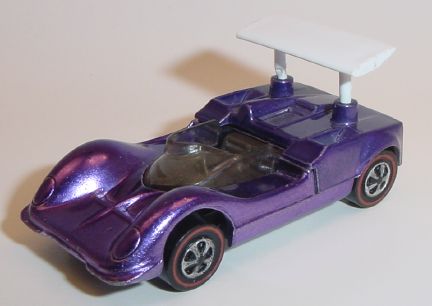
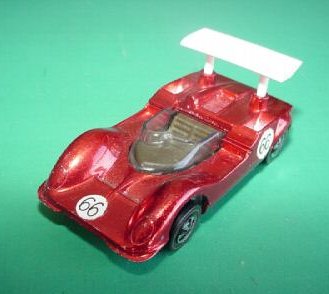
A
pair of US Chaparrals
with brown interiors.
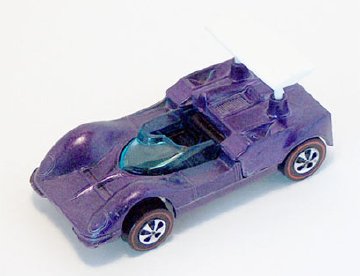
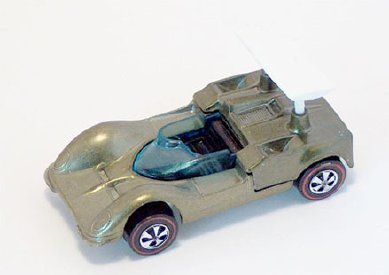
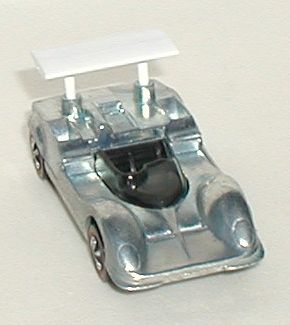
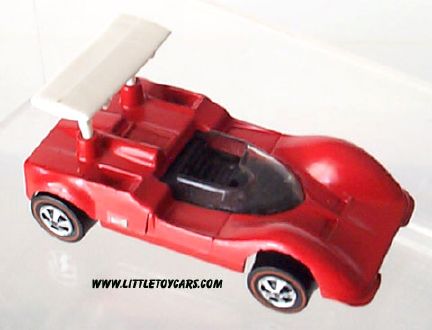
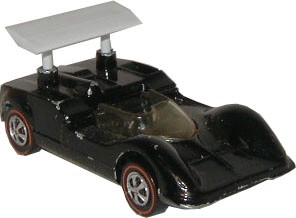
The
Chaparral 2G was re-issued in 1974 as the Winnipeg. For more
information, please see the Flying
Colors page.
Chaparral
2G Color chart
| US COLORS: |
COMMENTS: |
| aqua | common |
| green | common |
| orange | common |
| gold | common |
| red | |
| rose | |
| purple | |
| white enamel |
|
| brown | |
| olive | |
| blue |
|
| light blue |
|
| yellow |
|
| lime |
|
| magenta | hard to find |
| antifreeze |
very hard to find |
| hot pink |
very hard to find |
| light ("apple") green |
very hard to find |
| HK COLORS: |
|
| green |
common |
| red |
common |
| blue | common |
| aqua | uncommon |
| white enamel |
hard to find |
| olive |
rare |
| purple |
rare |
| orange |
rare; UK track sets only? |
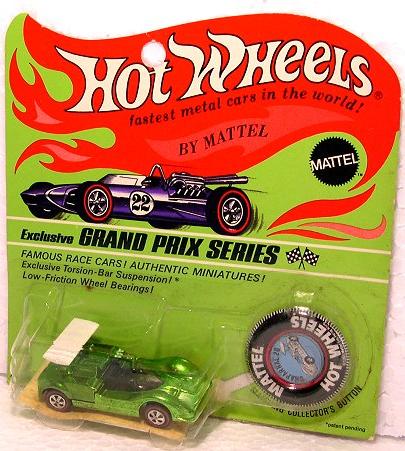
A
hard-to-find apple green Chaparral still in the blister pack!
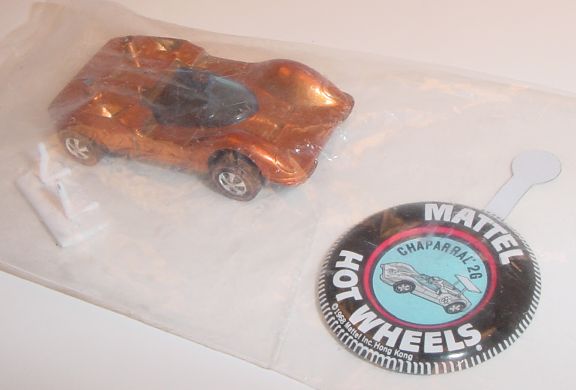
Here's
an amazing find: an orange HK Chaparral in the original bag from a UK
track set!

Allan
Rosen's awesome HK Chaparral rainbow. Quite an accomplishment!
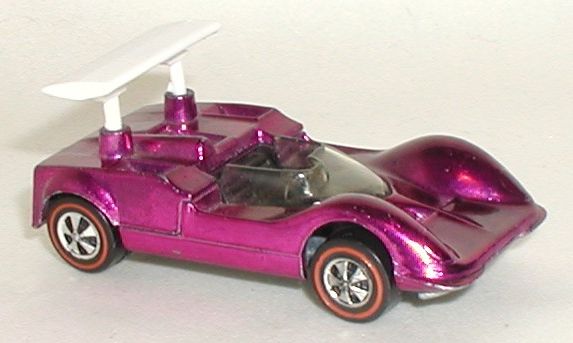
A magenta US Chaparral with cap
style wheels.
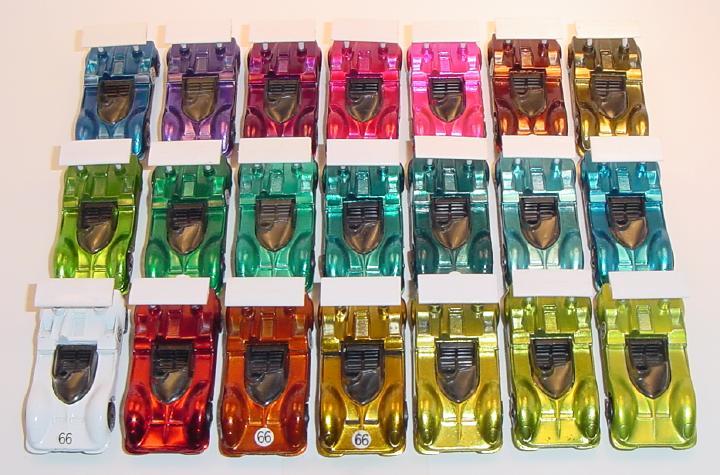
A
US Chaparral rainbow!